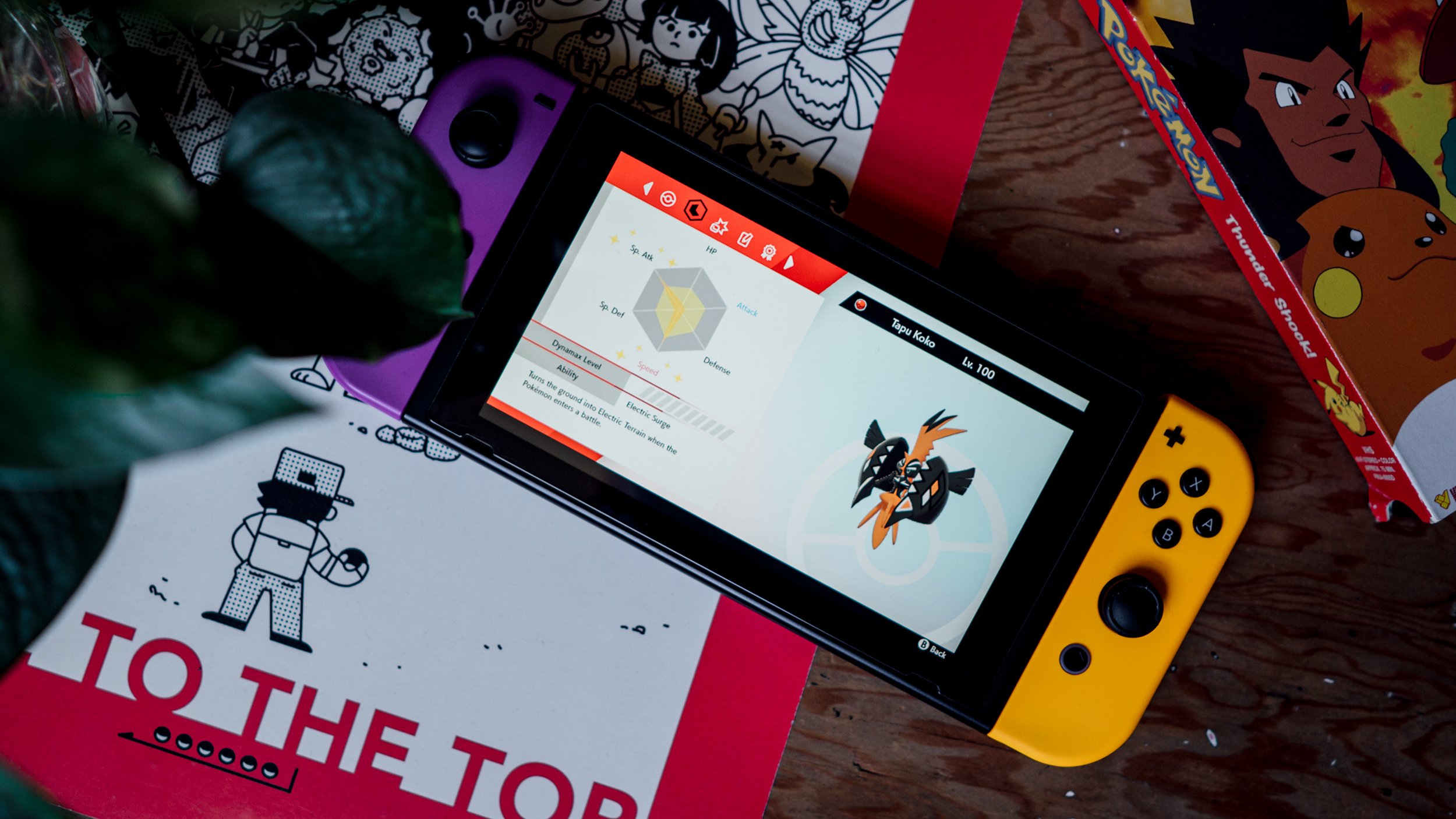
Trick Room
9min 18sec read
Trick Room can turn a battle on its head (ha!) by flipping the order in which Pokémon move.
Written by Wolfe Glick
Teambuilding / Concrete Building Blocks
What is Trick Room?
Trick Room is a move that reverses the order in which the Pokémon move for 5 turns. Under the effect of Trick Room, the Pokémon with the lowest Speed stat moves first, then the second lowest, then the second highest, then the highest. Trick Room does not affect move priority. Trick Room itself has a -7 priority, which is the lowest priority an attack can be, meaning it is (almost) always the last move used (unless there’s some trickery with other moves that affects the move order). Even though technically Trick Room lasts for five turns, because it always is set up last, it’s effect is only relevant for four turns.
Why is Trick Room strong?
Trick Room has multiple strengths:
Some strong Pokémon have low Speed stats as a counterbalance to their high offensive and defensive stats. Trick Room turns a large negative into a huge positive.
Furthermore, most non-Trick Room Pokémon will want to invest in their Speed stat in order to move before other Pokémon. Trick Room Pokémon very often don’t invest at all into their Speed stat, giving them extra EVs (stat points) compared to a Pokémon that has invested in speed while still being able to move first.
Trick Room is much stronger in VGC than it is in Singles– you have twice the amount of Pokémon to take advantage of each Trick Room turn compared to Singles.
It lasts for a long time (5 turns).
Additionally, Trick Room has been not only a good option but a dominant one in every VGC format historically. It has won seven of the twelve World Championships, which is highly consistent.
Trick Room Teams
The classic Trick Room Team includes:
Two Pokémon that set Trick Room (setters)
One to two Pokémon to help Trick Room get set up (helpers)
and one to two Pokémon to deal the bulk of the damage in Trick Room (sweepers)
This style of team (called a hard Trick Room team) is typically strong if Trick Room goes up, and much less strong otherwise. To circumvent this, some dedicated Trick Room teams make use of an alternative mode in case they can’t get Trick Room up. Players will run fast Pokémon even on the most dedicated Trick Room teams. There’s no real hard and fast rules when it comes to building Trick Room teams.
Some teams that utilize Trick Room can have as little as two Pokémon that make use of it, but still maintain the strategy as an option. It’s even possible for a mid-speed team to make good use of Trick Room with only one slow Pokémon.
EXAMPLE
The team I won the 2016 World Championships only has two Pokemon that could really make use of Trick Room. Despite that, it was one of the most important aspects of the team. The pairing of Kyogre and Bronzong could completely decimate faster teams, especially ones that relied on Primal Groudon. Not every Pokemon on your team needs to benefit from Trick Room in order for it to be an effective strategy.
There are certain consistent roles that Pokémon on Trick Room teams tend to fall into. These are general classifications that appear across generations and formats. There are three major categories: Trick Room Setters, Trick Room Helpers, and Trick Room Sweepers. Note that not every Trick Room team needs all three categories.
Roles: Trick Room Setters
Every Trick Room team needs a Pokémon that knows the move Trick Room-- a “setter”. The only requirement of a Trick Room setter is that it knows the move Trick Room. They typically fall into one of two categories: bulky setters, or offensive setters. A bulky Trick Room setter trades offense for survivability - it’s a Pokémon whose primary goal is to get Trick Room up, and then offers some support once it goes up. Pokémon like Cresselia, Dusclops, and Porygon2 fall into this category. Then there are offensive Trick Room setters - these Pokémon often need some support in order to get Trick Room up, but once set up they are able to function as a strong offensive threat, allowing immediate offense without need for repositioning. Hatterene and Reuniclus are some of the best examples of Offensive Trick Room setters. Some Trick Room setters are exceptions to this bulky/offensive split. For example, fast, frail Pokémon such as Nihilego, Whimsicott, and Gengar are normally selected for surprise factor or as anti-Trick Room tech.
EXAMPLE
In VGC2010, Huy Ha used a rather unusual team featuring an unorthodox Mewtwo build. Most people would assume that since Mewtwo has such high base speed, it would ordinarily be used as a fast sweeper, but Huy decided to give his Trick Room and Self-Destruct. Opponents expecting Mewtwo to attack turn 1 might make a defensive play like using Protect or switching, and would be totally caught off guard by Mewtwos Trick Room. You can take a look at the Report and Battle.
Roles: Trick Room Helpers
Trick Room helpers are Pokémon whose primary goal is to protect your Trick Room setter to allow them to get Trick Room up. They normally are selected due to a low Speed stat in addition to their access to strong support moves. The two most common ways of supporting a Trick Room setter are Fake Out and redirection.
Fake Out is a great way to stop one of your opponent’s moves, meaning your setter only needs to withstand one attack in order to get Trick Room up. In Dynamax formats, Fake Out is less useful due to Dynamax’s immunity to flinch, but Fake Out can still prevent disruption moves like Taunt from stopping Trick Room. Many good Fake Out users such as Incineroar and Scrafty provide additional support with Intimidate.
Redirection refers to the moves Follow Me and Rage Powder, which draw attacks away from your Trick Room setter. These Pokémon tend to be defensively oriented, but offer low offensive pressure, especially if paired with a defensive Trick Room setter. Perhaps counterintuitively, one of the best outcomes of Turn 1 in a battle is that a redirector is knocked out, which allows a free switch under Trick Room to a more offensive Pokémon. Each redirector still can be disruptive in their own way, however. Amoonguss uses Rage Powder and, if not KO’d, can follow up with Spore. Indeedee-Female uses Follow Me and can follow up with Psychic Terrain-boosted Expanding Force. Defensive redirection Pokémon tend to perform better when paired with an offensive Trick Room setter, though they can work in many situations.
Roles: Trick Room Sweepers
Trick Room sweepers are Pokémon intended to be heavy hitters under Trick Room. They tend to be bulky and hard hitting, and very slow. The goal of a Trick Room sweeper is to do as much damage as possible before Trick Room expires, so having good coverage and being difficult to switch into are huge pluses. However, once these Pokémon are caught outside of Trick Room, they will always move last, which is a significant disadvantage. Trick Room sweepers tend to carry offensive items like Life Orb and Weakness Policy. Rhyperior, Torkoal, and Glastrier are good examples of Trick Room Sweepers.
Trick Room Counters
There are specific Pokémon, moves, and items that you can add to your team to make it more difficult to get Trick Room up, but there’s also general ways of playing the game that are effective at stopping Trick Room, which we talk about here.
Here are things you can put on your team to help you versus Trick Room:
The move Taunt stops all status moves as long as the target Pokémon isn’t holding the Mental Herb.
Moves that force switches such as Roar and Dragon Tail move before Trick Room and force the setter out before Trick Room goes up.
Using Trick Room when Trick Room is up cancels the effects of Trick Room.
A Pokémon knowing both Imprison and Trick Room and then using Imprison makes it so your opponent can’t use Trick Room until your Imprison user is KO’d or switches out.
You can also make use of your own slow Pokémon that benefit from your opponents Trick Room.
EXAMPLE
Arash Omatti won the 2013 World Championships using multiple slow Pokemon that benefitted from Trick Room without a Trick Room setter on his team. Arash’s team consisted of three fast Pokemon in Scarf Mamoswine, Tornadus, and Latios, and three slow Pokemon in Conkeldurr, Heatran, and Amoonguss. Because Trick Room was so prevalent at the time, Arash ensured that he had the faster Pokemon outside of Trick Room as well as slower Pokemon if his opponent set it up, allowing him to react flexibly and ensure he was consistently moving first.
However, be careful: Trick Room teams often have counterplay in the early game for all of the above strategies, mostly in the form of their support Pokémon, though obviously some methods are easier to deal with than others. These are still good strategies to consider though, especially adding the move Taunt which is highly flexible, and putting slow Pokémon on your team, which are useful in many situations.
In summary, Trick Room is one of the best and most consistent strategies of all time. There’s a whole spectrum of ways you can integrate it into teams, and various types of Pokémon can benefit from the twisted dimensions. Playing against Trick Room requires smart positioning and planning, in addition to having the tools to handle it in the first place. It’s also very fun to use and rather straightforward to grasp the basics of– if you haven’t tried it before, I personally recommend it.

